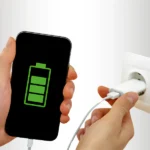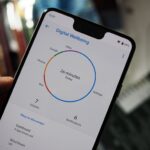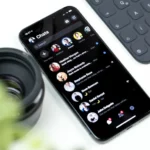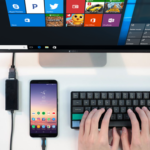Ensure you understand the implications before Purchasing an iPad with Nano-Texture Glass and paying extra for the nano-texture glass option.

The 2024 iPad Pro models from Apple come with a nano-texture glass alternative. While this has been used on previous products like the Apple Studio Display and Pro Display XDR, it may not be worth paying extra for when purchasing an iPad Pro – here’s why.
It doesn’t provide a tactile experience resembling that of paper
Although the addition of a matte texture to its surface might suggest that nano-texture glass is ideal for artistry, it falls short in this regard. While it does provide slightly more resistance than regular glass, it cannot match the rougher texture provided by some matte screen protectors.
The nano-texture glass on the iPad Pro is not marketed by Apple for drawing. Its primary function is to reduce glare during usage in bright outdoor settings.
You lose the perfect blacks of the OLED Display
The 2024 iPad Pro models boast a top-notch feature: Ultra Retina XDR displays utilizing two OLED panels working in harmony to prevent any loss of brightness levels. If you’re familiar with OLED technology, you know that these types of displays can produce flawless blacks and an unmatched contrast ratio without limitation.
However, when using an iPad Pro featuring nano-texture glass, the blacks seem more akin to a shade of dark gray because of its matte surface. The colors aren’t quite as vivid for the same reason thus compromising visual accuracy.
At the 2024 iPads’ “Let Loose” launch event, Apple claimed that its nano-texture glass preserves image quality and contrast. However, users on MacRumors Forums have observed a hazy display and degraded dark text against a white background in contradiction to this statement.
A Fingerprint Magnet is a Nano-Texture Glass feature
Although the nano-texture glass provides a matte finish, it may appear to be less prone to fingerprints. However, this assumption is far from true as it tends to attract more smudges than its standard glass counterpart.
The marks become evident promptly on the display and are particularly conspicuous when viewed against a white backdrop on an iPad screen.
One of the reasons why Apple provides a polishing cloth with an iPad Pro that has nano-texture glass is to prevent damage.
Therefore, if you opt for the extra expense of nano-texture glass, be aware that additional maintenance will require carrying around the provided cleaning tool.
The $100 add-on is restricted to models with 1TB and 2TB limits
Although I am willing to pay an additional $100 for the nano-texture glass, Apple has restricted this option only to the 1TB and 2TB iPad Pro models.
This means that if you want to minimize glare with this feature, you will have to spend at least $1,699 (for the 11-inch model) or $1,999 (for the 13-inch version), which are higher than their respective base prices of $999 and $1,299.
Why does Apple insist on customers upgrading to higher-tier configurations for a matte anti-glare coating when most people don’t require 1TB or 2TB of storage space on their iPads, particularly with iCloud+ subscription plans accessible at different price points?
Conclusion
To select a surface suitable for drawing, opt for regular glass and subsequently purchase an affordable 2-pack of Paperlike screen protectors that provide roughness.
Although I’m not a fan of the nano-texture glass feature on the 2024 iPad Pros, it caters to a specific demographic.
If you tend to use your device outside or in well-lit environments frequently, this optional upgrade may be worth investing in. It effectively scatters surrounding light and minimizes glare much better than any matte screen protector can achieve.
Ensure you understand the implications before Purchasing an iPad with Nano-Texture Glass and paying extra for the nano-texture glass option.





